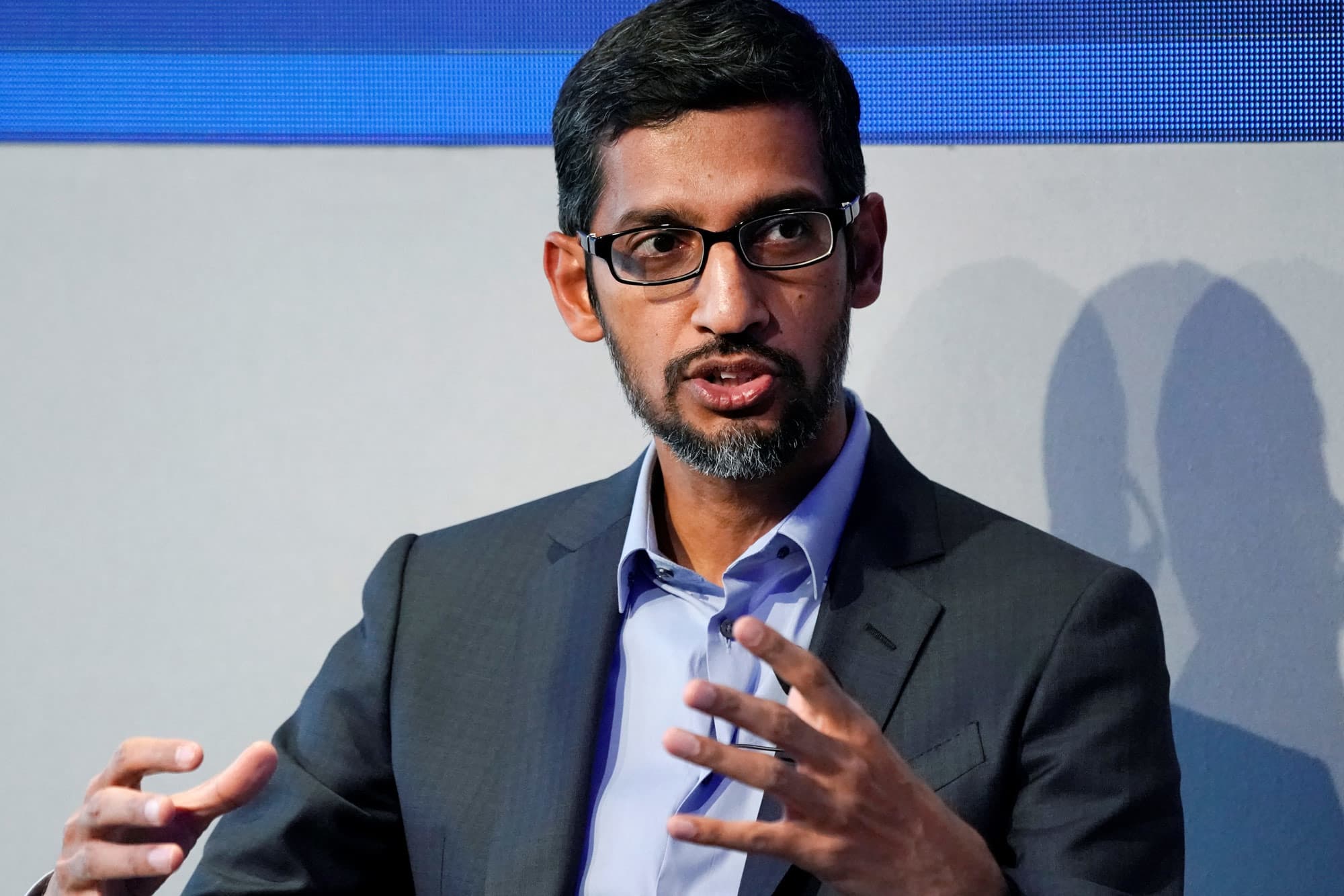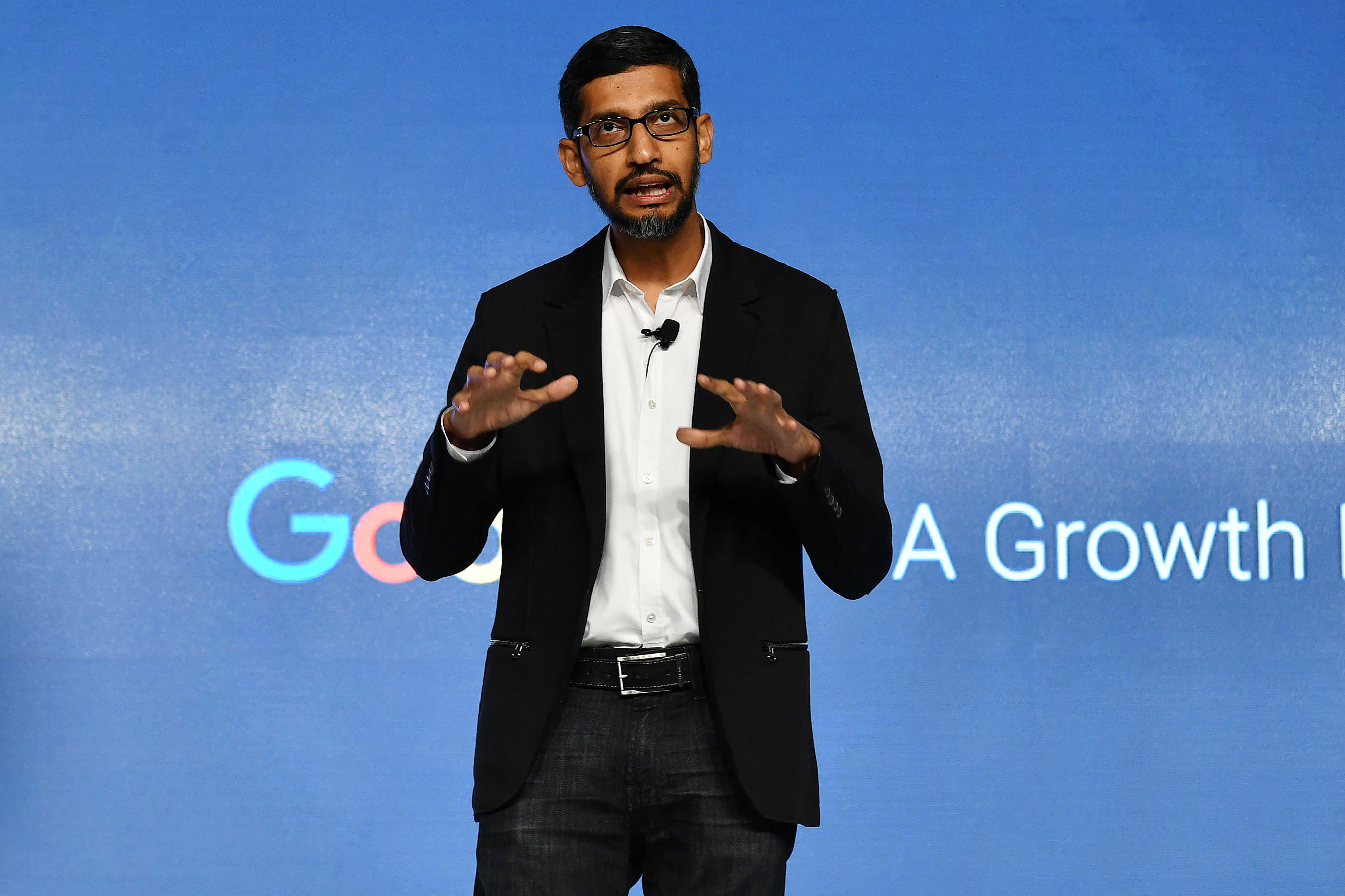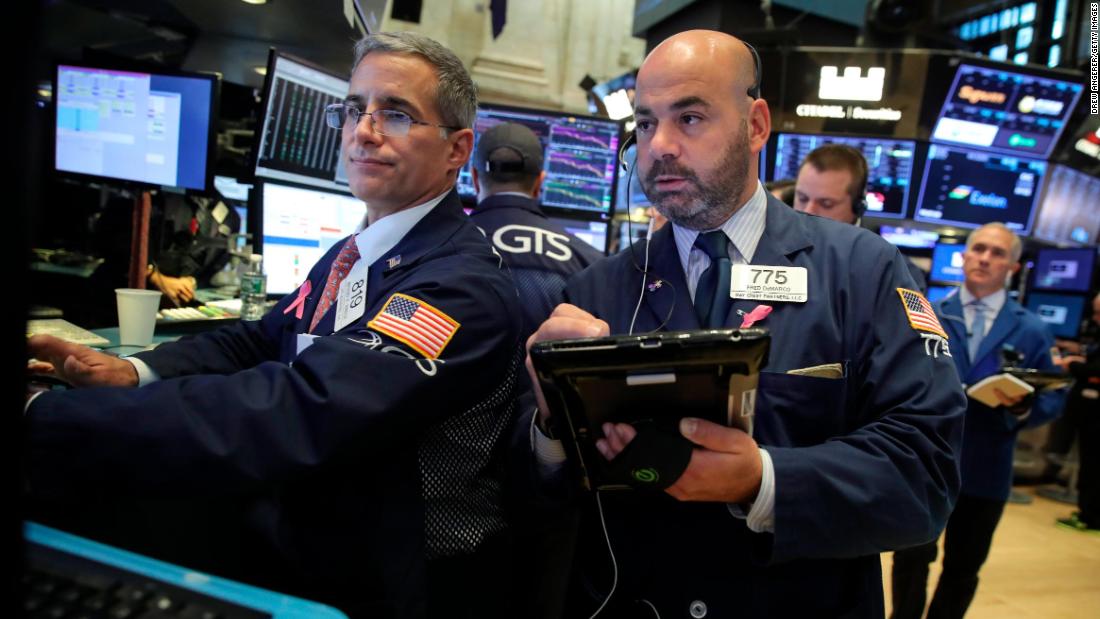NEW YORK--(BUSINESS WIRE)--Spotify Technology S.A. (NYSE:SPOT) today reported financial results for
the first fiscal quarter of 2019 ending March 31, 2019.
Dear Shareholders,
Results for Q1 2019 were largely positive with most metrics
outperforming our expectations and landing at the high end of, or
exceeding, our Q1 guidance.1
MONTHLY ACTIVE USERS (“MAUs”)
MAUs grew 26% Y/Y to 217 million, slightly lower than the midpoint of
our 215-220 million MAU guidance range.
We launched India in late February expanding our global market footprint
to 79 countries. More than 1 million users signed up for Spotify in our
first week in the market, and growth has continued to outpace our
expectations. We now have more than 2 million users in India.
PREMIUM SUBSCRIBERS
Premium Subscribers grew to 100 million, up 32% Y/Y, reaching the high
end of our guidance range of 97-100 million, and marking an important
milestone in Company history. Outperformance was driven by a better than
plan promotion in the US and Canada and continued strong growth in
Family Plan. We also saw strong growth from the expansion of our Google
Home Mini promotion, as well as the price reduction to our Spotify
Premium + Hulu offering in the US.
In March, we extended our partnership with Google by expanding our
Google Home Mini promotion to two new markets, the UK and France. The
new promotional offer is substantially similar to the deal offered in
the US in Q4. In the UK and France, new and existing Family Plan master
account holders can claim a free Google Home Mini voice speaker. We
believe that voice speakers are a critical area of growth, particularly
for music and podcasts, and we intend to continue to pursue
opportunities to expand our presence in that area.
We announced a significant step forward in our ongoing partnership with
Samsung during Q1 whereby the Spotify app will be preloaded on millions
of new devices globally. New users in the US who purchase Samsung’s
flagship Galaxy S10 device with the Spotify app preloaded also will have
access to a special six month free trial offer for Spotify Premium.
Additionally, we expanded our partnership with Hulu during Q1 by
offering their limited commercial plan to our Standard $9.99 subscribers
at no additional charge. This promotion replaces our existing $12.99
Spotify + Hulu bundle and builds upon the success and popularity of our
Spotify Student + Hulu plan available in the US.
Family and Student plans continue their fast growth and have continued
to increase as a percentage of our total subscribers. Churn was flat
with Q4 and also roughly the same as Q1 of 2018.
FINANCIAL METRICS
Revenue
Total Q1 revenue of €1,511 million grew 33% Y/Y.
Premium revenue of €1,385 million in Q1 grew 34% Y/Y, the third quarter
of accelerating Y/Y growth in the last four quarters. Average revenue
per user (“ARPU”) was €4.71 in Q1, roughly flat Y/Y (down 2% excluding
the impact from foreign exchange rates). Downward pressure on ARPU has
moderated, and we expect that ARPU declines through the remainder of the
year will be in the low single digits. As we’ve spoken about in previous
quarters, the declines in ARPU are a result of shifts in both product
and geographic mix. Approximately 75% of the impact to ARPU is
attributable to product mix changes, and the remainder a function of
changes in geographic mix and other factors.
Ad-Supported revenue of €126 million grew 24% Y/Y. We saw a small
incremental benefit from podcasts during Q1 following our acquisitions
of Gimlet Media and Anchor in February and the successful rollout of
Spotify owned and exclusive content (The
Joe Budden Podcast, Amy
Schumer Presents: 3 Girls, 1 Keith, Dope
Labs, etc.) We expect the revenue from podcasts to accelerate
through 2019. Over time, our ambition is to develop a more robust
advertising solution for podcasts that will allow us to layer in the
kind of targeting, measurement, and reporting capabilities we have for
the core Ad-Supported business.
Ad-Supported revenue growth underperformed our expectations in Q1,
primarily in the US and primarily with our sponsored sessions video
product. The performance shortfall was pricing related. We have course
corrected and are seeing strong growth across the ads business in Q2.
Two of our strongest areas of growth in Q1 were measurement and
programmatic revenues. Measurement related revenues doubled from 20% to
40% of total ad revenues Y/Y, while Programmatic and Self-Serve grew 53%
Y/Y and now account for 26% of Total Ad-Supported Revenue.
In April of last year we officially unveiled a new Ad-Supported
experience on Spotify. The updated user experience provided greater
consumer control and an increased focus on curation and personalization.
The net result has been a 12% increase in Content Hours per MAU across
our free tier. This means accelerating growth in ad inventory, which
should mean stronger Ad-Supported revenue growth.
Gross Margin
Gross Margin was 24.7% in Q1, above the high
end of our guidance range of 22.5-24.5%. Outperformance relative to our
expectations resulted from a combination of outperformance of Premium
Subscribers, slower than anticipated release of original podcast
content, and supply constraints of Google Home Mini devices relating to
our Family Plan promotion.
Premium Gross Margin was 25.9% in Q1, down from 27.3% in Q4 and down 20
bps Y/Y. Ad-Supported Gross Margin was 11.1% in Q1, down seasonally from
22.1% in Q4 and down 160 bps Y/Y.
Spotify for Artists
In October 2018, we launched Spotify
for Podcasters in beta, a platform that provides podcast creators
with tools and data insights about audience demographics. Early adoption
continues to gain momentum, as the number of podcast creators using the
platform has nearly doubled in the first 6 months. More than 20,000
podcast teams are now using the platform on a monthly basis.
Additionally, more than 50,000 shows have been submitted to Spotify
through Spotify for Podcasters, enabling listeners around the world to
discover new and unique content that suits their interests. Today there
are more than 250,000 podcast titles available on our platform. In Q1 we
launched 15 originals and exclusives including Podkinski
in Germany, Gynning
& Berg in Sweden, and our daily news podcast, Cafe
da Manha in Brazil, a format we hope to expand to other
countries in Latin America.
Last month Spotify for Artists launched a new feature called Unique
Links. This tool enables artists to share a customized URL that
links to a playlist featuring their track(s) at the top of the playlist.
By offering greater personalization of Editorial playlists, we’ve
increased the number of artists featured on playlists by 30% and the
number of songs listeners are discovering by 35%.
In Q1 we continued to develop tools for Spotify Publishing Analytics. We
introduced playlist add annotations which allow publishers to see when
their songs are added to playlists and understand which playlists drive
spikes in listening. To date we’ve seen engagement from 40 of the top
music publishers around the world.
Operating Expenses / Income (Loss)
Operating expenses of
€420 million in Q1 increased 30% Y/Y. Operating Losses totaled €47
million yielding an Operating Margin of (3.1%), an improvement of 50 bps
Y/Y. Our better than expected loss in the quarter was a result of higher
Gross Profit and lower than expected marketing spend.
The growth in our share price in Q1 significantly increased our
operating expenses for the quarter. The increase in our stock price
resulted in a significant increase of accrued social costs for stock
options and RSUs. As a reminder, social costs are payroll taxes
associated with employee salaries and benefits, including stock based
compensation. We are subject to social taxes in several countries in
which we operate, although Sweden accounts for the bulk of the social
costs. We don’t forecast stock price changes in our guidance so material
upward or downward movements can have an outsized impact on our reported
operating expenses.
IFRS 16
Starting January 1, 2019, we adopted the new lease
accounting standards dictated by IFRS 16. This required certain leases
which were accounted for as operating leases be treated as finance
leases going forward. Certain leases were reclassified as assets and
liabilities on the balance sheet which yielded increased depreciation
and interest expense, offset by a reduction in rental expense. We
recognized €9 million of lease liability interest expense in finance
costs during the first quarter of 2019.
Free Cash Flow
We generated €209 million in net cash flows
from operating activities and €173 million in Free Cash Flow in Q1. Both
more than doubled Y/Y. Free Cash Flow in Q1 benefited from the growth of
accounts payable. We maintain positive working capital dynamics, and our
goal is to sustain and grow Free Cash Flow, excluding the impact of
capital expenditures associated with the build-out of new and existing
offices in New York, London, Los Angeles, Stockholm, and Boston, among
others. We paid out approximately €37 million associated with our office
builds in Q1. We expect to complete these projects over the next 12
months at a cost of roughly €200 million. As a result, we are expecting
a sequential increase in capital expenditures for office space in Q2 of
approximately €25 million.
We ended Q1 with €1.7 billion in cash and cash equivalents, restricted
cash, and short term investments.
Q1 Investments Update
In Q1 the value of our Tencent Music
(“TME”) investment increased by €652 million to €2.3 billion. The change
in value was accounted for as a gain in Other Comprehensive Income. We
also spent €308 million in total purchase consideration to acquire
Gimlet Media and Anchor FM, and subsequent to the quarter end, we
acquired a third podcasting company, Cutler Media, LLC (“Parcast”), for
total purchase consideration of approximately €50 million. The combined
purchase consideration for all three podcast companies was €358M which
is roughly equivalent to Spotify’s cumulative FCF over the last three
quarters, or alternatively, 55% of the Q2 increase in the value of our
TME investment.
Growth of Global Recorded Music Market Accelerates
The
International Federation of the Phonographic Industry (“IFPI”) released
its annual Global Music Report in April 2019. IFPI reported that
industry growth accelerated to 9.7% in 2018 to $19.1 billion, an
increase from 8.1% in 2017 and the fourth consecutive year of growth.
While Physical declined 10% and Downloads declined 21%, Streaming grew
34%, and now accounts for 47% of all industry revenue. Streaming is the
engine driving the growth in recorded music revenue and Spotify is the
engine driving the growth in Streaming.
Q2 2019 AND FULL YEAR OUTLOOK
These forward-looking statements reflect Spotify’s expectations as of
April 29, 2019 and are subject to substantial uncertainty.
Q2 2019 Guidance:
-
Total MAUs: 222-228 million, up 23-27% Y/Y
-
Total Premium Subscribers: 107-110 million, up 29-34% Y/Y
-
Total Revenue: €1.51-€1.71 billion, up 18-35% Y/Y
-
Gross Margin: 23.5-25.5%
-
Operating Profit/Loss: €(15)-(€95) million
Full Year 2019 Guidance:
-
Total MAUs: 245-265 million, up 18-28% Y/Y
-
Total Premium Subscribers: 117-127 million, up 21-32% Y/Y
-
Total Revenue: €6.35-€6.8 billion, up 21-29% Y/Y
-
Gross Margin: 22.0-25.0%
-
Operating Profit/Loss: €(180)-(€340) million
Our quarterly and annual guidance continues to include an estimate of
the impact of social charges on our financial statements. This expense
can vary materially from quarter to quarter based on fluctuations in the
price of Spotify stock, which impacts our accruals for future expenses.
Our forecast guidance ranges incorporate our best estimate of the impact
of social charges on our income statement; however, material changes in
the value of Spotify’s stock price could have an outsized impact on our
reported profit or loss for the quarter and/or the year.
SHARE REPURCHASE PROGRAM UPDATE
On November 5, 2018, Spotify announced a program to repurchase up to
$1.0 billion of its publicly traded shares. During Q1, the Company
repurchased 1,019,409 shares at a total cost of $138.2 million and an
average cost of $135.58 per share. In total, the Company has repurchased
1,706,680 shares at a total cost of $225.5 million and an average cost
of $132.13 per share.
EARNINGS QUESTION & ANSWER SESSION
The Company will host a live question and answer session starting at 8
a.m. ET today on investors.spotify.com.
Daniel Ek, our Founder and CEO, and Barry McCarthy, our Chief Financial
Officer, will be on hand to answer questions submitted to ir@spotify.com
and via the live chat window available through the webcast. Participants
also may join using the listen-only conference line:
Participant Toll Free Dial-In Number: (844) 343-9039
Participant
International Dial-In Number: (647) 689-5130
Conference ID: 4598466
Use of Non IFRS Measures
This shareholder letter includes references to the non-IFRS financial
measures of EBITDA and Free Cash Flow. Management believes that EBITDA
and Free Cash Flow are important metrics because they present measures
that approximate the amount of cash generated that is available to repay
debt obligations, make investments, and for certain other activities
that excludes certain infrequently occurring and/or non-cash items.
However, these measures should be considered in addition to, not as a
substitute for or superior to, net income, operating income, or other
financial measures prepared in accordance with IFRS. This shareholder
letter also includes references to the non-IFRS financial measures of
Revenue excluding foreign exchange effect, Premium revenue excluding
foreign exchange effect and Ad-Supported revenue excluding foreign
exchange effect. Management believes that Revenue excluding foreign
exchange effect, Premium revenue excluding foreign exchange effect and
Ad-Supported revenue excluding foreign exchange effect are important
metrics because they present measures that facilitate comparison to our
historical performance. Revenue excluding foreign exchange effect,
Premium revenue excluding foreign exchange effect and Ad-Supported
revenue excluding foreign exchange effect should be considered in
addition to, not as a substitute for or superior to, Revenue, Premium
revenue, Ad-Supported revenue or other financial measures prepared in
accordance with IFRS.
Forward Looking Statements
This shareholder letter contains estimates and forward-looking
statements. All statements other than statements of historical fact are
forward-looking statements. The words “may,” “might,” “will,” “could,”
“would,” “should,” “expect,” “plan,” “anticipate,” “intend,” “seek,”
“believe,” “estimate,” “predict,” “potential,” “continue,”
“contemplate,” “possible,” and similar words are intended to identify
estimates and forward-looking statements.
Our estimates and forward-looking statements are mainly based on our
current expectations and estimates of future events and trends, which
affect or may affect our businesses and operations. Although we believe
that these estimates and forward-looking statements are based upon
reasonable assumptions, they are subject to numerous risks and
uncertainties and are made in light of information currently available
to us. Many important factors may adversely affect our results as
indicated in forward-looking statements. These factors include, but are
not limited to: our ability to attract prospective users and to retain
existing users; our dependence upon third-party licenses for sound
recordings and musical compositions; our lack of control over the
providers of our content and their effect on our access to music and
other content; our ability to generate sufficient revenue to be
profitable or to generate positive cash flow on a sustained basis; our
ability to comply with the many complex license agreements to which we
are a party; our ability to accurately estimate the amounts payable
under our license agreements; the limitations on our operating
flexibility due to the minimum guarantees required under certain of our
license agreements; our ability to obtain accurate and comprehensive
information about music compositions in order to obtain necessary
licenses or perform obligations under our existing license agreements;
potential breaches of our security systems; assertions by third parties
of infringement or other violations by us of their intellectual property
rights; competition for users and user listening time; our ability to
accurately estimate our user metrics and other estimates; risks
associated with manipulation of stream counts and user accounts and
unauthorized access to our services; changes in legislation or
governmental regulations affecting us; ability to hire and retain key
personnel; our ability to maintain, protect, and enhance our brand;
risks associated with our international expansion, including
difficulties obtaining rights to stream music on favorable terms; risks
relating to the acquisition, investment, and disposition of companies or
technologies; dilution resulting from additional share issuances;
tax-related risks; the concentration of voting power among our founders
who have and will continue to have substantial control over our
business; risks related to our status as a foreign private issuer;
international, national or local economic, social or political
conditions; and risks associated with accounting estimates, currency
fluctuations and foreign exchange controls.
Other sections of this report describe additional risk factors that
could adversely impact our business and financial performance. Moreover,
we operate in an evolving environment. New risk factors and
uncertainties emerge from time to time, and it is not possible for our
management to predict all risk factors and uncertainties, nor are we
able to assess the impact of all of these risk factors on our business
or the extent to which any risk factor, or combination of risk factors,
may cause actual results to differ materially from those contained in
any forward-looking statements. We qualify all of our forward-looking
statements by these cautionary statements. You should read this report
and the documents that we have filed as exhibits to this report
completely and with the understanding that our actual future results may
be materially different and worse from what we expect.
|
|
|
|
|
|
|
Interim condensed consolidated statement of operations
|
|
(Unaudited)
|
|
(in € millions, except share and per share data)
|
|
|
|
|
|
|
|
|
|
|
|
Three months ended
|
|
|
|
|
|
March 31,
2019
|
|
|
December 31,
2018
|
|
|
March 31,
2018
|
|
Revenue
|
|
|
|
1,511
|
|
|
|
1,495
|
|
|
|
1,139
|
|
|
Cost of revenue
|
|
|
|
1,138
|
|
|
|
1,096
|
|
|
|
856
|
|
|
Gross profit
|
|
|
|
373
|
|
|
|
399
|
|
|
|
283
|
|
|
Research and development
|
|
|
|
155
|
|
|
|
100
|
|
|
|
115
|
|
|
Sales and marketing
|
|
|
|
172
|
|
|
|
163
|
|
|
|
138
|
|
|
General and administrative
|
|
|
|
93
|
|
|
|
42
|
|
|
|
71
|
|
|
|
|
|
|
420
|
|
|
|
305
|
|
|
|
324
|
|
|
Operating (loss)/income
|
|
|
|
(47
|
)
|
|
|
94
|
|
|
|
(41
|
)
|
|
Finance income
|
|
|
|
34
|
|
|
|
389
|
|
|
|
15
|
|
|
Finance costs
|
|
|
|
(156
|
)
|
|
|
(2
|
)
|
|
|
(154
|
)
|
|
Finance income/(costs) - net
|
|
|
|
(122
|
)
|
|
|
387
|
|
|
|
(139
|
)
|
|
Loss before tax
|
|
|
|
(169
|
)
|
|
|
481
|
|
|
|
(180
|
)
|
|
Income tax (benefit)/expense
|
|
|
|
(27
|
)
|
|
|
39
|
|
|
|
(11
|
)
|
|
Net (loss)/income attributable to owners of the parent
|
|
|
|
(142
|
)
|
|
|
442
|
|
|
|
(169
|
)
|
|
(Loss)/earnings per share attributable to owners
of the parent
|
|
|
|
|
|
|
|
|
|
|
|
|
|
|
Basic
|
|
|
|
(0.79
|
)
|
|
|
2.44
|
|
|
|
(1.01
|
)
|
|
Diluted
|
|
|
|
(0.79
|
)
|
|
|
0.36
|
|
|
|
(1.01
|
)
|
|
Weighted-average ordinary shares outstanding
|
|
|
|
|
|
|
|
|
|
|
|
|
|
|
Basic
|
|
|
|
180,613,539
|
|
|
|
181,067,994
|
|
|
|
167,778,952
|
|
|
Diluted
|
|
|
|
180,613,539
|
|
|
|
190,511,148
|
|
|
|
167,778,952
|
|
|
|
|
|
|
|
|
|
|
|
|
|
|
|
|
|
|
|
|
|
|
|
|
|
|
Condensed consolidated statement of financial position
|
|
(Unaudited)
|
|
(in € millions)
|
|
|
|
|
|
|
|
|
|
|
|
|
|
|
March 31,
2019
|
|
|
December 31,
2018
|
|
Assets
|
|
|
|
|
|
|
|
|
|
|
Non-current assets
|
|
|
|
|
|
|
|
|
|
|
Lease right-of-use assets
|
|
|
|
430
|
|
|
|
—
|
|
|
Property and equipment
|
|
|
|
235
|
|
|
|
197
|
|
|
Goodwill
|
|
|
|
424
|
|
|
|
146
|
|
|
Intangible assets
|
|
|
|
54
|
|
|
|
28
|
|
|
Long term investments
|
|
|
|
2,299
|
|
|
|
1,646
|
|
|
Restricted cash and other non-current assets
|
|
|
|
70
|
|
|
|
65
|
|
|
Deferred tax assets
|
|
|
|
10
|
|
|
|
8
|
|
|
|
|
|
|
3,522
|
|
|
|
2,090
|
|
|
Current assets
|
|
|
|
|
|
|
|
|
|
|
Trade and other receivables
|
|
|
|
391
|
|
|
|
400
|
|
|
Income tax receivable
|
|
|
|
2
|
|
|
|
2
|
|
|
Short term investments
|
|
|
|
660
|
|
|
|
915
|
|
|
Cash and cash equivalents
|
|
|
|
966
|
|
|
|
891
|
|
|
Other current assets
|
|
|
|
52
|
|
|
|
38
|
|
|
|
|
|
|
2,071
|
|
|
|
2,246
|
|
|
Total assets
|
|
|
|
5,593
|
|
|
|
4,336
|
|
|
Equity and liabilities
|
|
|
|
|
|
|
|
|
|
|
Equity
|
|
|
|
|
|
|
|
|
|
|
Share capital
|
|
|
|
—
|
|
|
|
—
|
|
|
Other paid in capital
|
|
|
|
3,834
|
|
|
|
3,801
|
|
|
Treasury shares
|
|
|
|
(198
|
)
|
|
|
(77
|
)
|
|
Other reserves
|
|
|
|
1,491
|
|
|
|
875
|
|
|
Accumulated deficit
|
|
|
|
(2,665
|
)
|
|
|
(2,505
|
)
|
|
Equity attributable to owners of the parent
|
|
|
|
2,462
|
|
|
|
2,094
|
|
|
Non-current liabilities
|
|
|
|
|
|
|
|
|
|
|
Lease liabilities
|
|
|
|
555
|
|
|
|
—
|
|
|
Accrued expenses and other liabilities
|
|
|
|
1
|
|
|
|
85
|
|
|
Provisions
|
|
|
|
7
|
|
|
|
8
|
|
|
Deferred tax liabilities
|
|
|
|
61
|
|
|
|
2
|
|
|
|
|
|
|
624
|
|
|
|
95
|
|
|
Current liabilities
|
|
|
|
|
|
|
|
|
|
|
Trade and other payables
|
|
|
|
397
|
|
|
|
427
|
|
|
Income tax payable
|
|
|
|
4
|
|
|
|
5
|
|
|
Deferred revenue
|
|
|
|
273
|
|
|
|
258
|
|
|
Accrued expenses and other liabilities
|
|
|
|
1,298
|
|
|
|
1,076
|
|
|
Provisions
|
|
|
|
44
|
|
|
|
42
|
|
|
Derivative liabilities
|
|
|
|
491
|
|
|
|
339
|
|
|
|
|
|
|
2,507
|
|
|
|
2,147
|
|
|
Total liabilities
|
|
|
|
3,131
|
|
|
|
2,242
|
|
|
Total equity and liabilities
|
|
|
|
5,593
|
|
|
|
4,336
|
|
|
|
|
|
|
|
|
|
|
|
|
|
|
|
|
|
|
|
Interim condensed consolidated statement of cash flows
|
|
(Unaudited)
|
|
(in € millions)
|
|
|
|
|
|
|
|
|
|
|
|
Three months ended
|
|
|
|
|
|
March 31,
2019
|
|
|
December 31,
2018
|
|
|
March 31,
2018
|
|
Operating activities
|
|
|
|
|
|
|
|
|
|
|
|
|
|
|
Net (loss)/income
|
|
|
|
(142
|
)
|
|
|
442
|
|
|
|
(169
|
)
|
|
Adjustments to reconcile net loss to net cash flows
|
|
|
|
|
|
|
|
|
|
|
|
|
|
|
Depreciation of property and equipment
|
|
|
|
17
|
|
|
|
4
|
|
|
|
9
|
|
|
Amortization of intangible assets
|
|
|
|
4
|
|
|
|
4
|
|
|
|
2
|
|
|
Share-based payments expense
|
|
|
|
26
|
|
|
|
23
|
|
|
|
18
|
|
|
Finance income
|
|
|
|
(34
|
)
|
|
|
(389
|
)
|
|
|
(15
|
)
|
|
Finance costs
|
|
|
|
156
|
|
|
|
2
|
|
|
|
154
|
|
|
Income tax (benefit)/expense
|
|
|
|
(27
|
)
|
|
|
39
|
|
|
|
(11
|
)
|
|
Other
|
|
|
|
8
|
|
|
|
15
|
|
|
|
1
|
|
|
Changes in working capital:
|
|
|
|
|
|
|
|
|
|
|
|
|
|
|
Decrease/(increase) in trade receivables
and other assets
|
|
|
|
35
|
|
|
|
(59
|
)
|
|
|
15
|
|
|
Increase in trade and other liabilities
|
|
|
|
155
|
|
|
|
57
|
|
|
|
70
|
|
|
Increase in deferred revenue
|
|
|
|
13
|
|
|
|
17
|
|
|
|
9
|
|
|
Decrease in provisions
|
|
|
|
—
|
|
|
|
(7
|
)
|
|
|
(3
|
)
|
|
Interest paid on lease liabilities
|
|
|
|
(4
|
)
|
|
|
—
|
|
|
|
—
|
|
|
Interest received
|
|
|
|
4
|
|
|
|
3
|
|
|
|
10
|
|
|
Income tax paid
|
|
|
|
(2
|
)
|
|
|
(1
|
)
|
|
|
(6
|
)
|
|
Net cash flows from operating activities
|
|
|
|
209
|
|
|
|
150
|
|
|
|
84
|
|
|
Investing activities
|
|
|
|
|
|
|
|
|
|
|
|
|
|
|
Business combinations, net of cash acquired
|
|
|
|
(288
|
)
|
|
|
—
|
|
|
|
—
|
|
|
Purchases of property and equipment
|
|
|
|
(37
|
)
|
|
|
(65
|
)
|
|
|
(6
|
)
|
|
Purchases of short term investments
|
|
|
|
(104
|
)
|
|
|
(300
|
)
|
|
|
(271
|
)
|
|
Sales and maturities of short term investments
|
|
|
|
383
|
|
|
|
66
|
|
|
|
430
|
|
|
Change in restricted cash
|
|
|
|
1
|
|
|
|
(1
|
)
|
|
|
(4
|
)
|
|
Other
|
|
|
|
(4
|
)
|
|
|
—
|
|
|
|
(10
|
)
|
|
Net cash flows (used in)/from investing activities
|
|
|
|
(49
|
)
|
|
|
(300
|
)
|
|
|
139
|
|
|
Financing activities
|
|
|
|
|
|
|
|
|
|
|
|
|
|
|
Payments of lease liabilities
|
|
|
|
(5
|
)
|
|
|
—
|
|
|
|
—
|
|
|
Repurchases of ordinary shares
|
|
|
|
(126
|
)
|
|
|
(72
|
)
|
|
|
—
|
|
|
Proceeds from exercise of share options
|
|
|
|
33
|
|
|
|
17
|
|
|
|
39
|
|
|
Other
|
|
|
|
—
|
|
|
|
—
|
|
|
|
4
|
|
|
Net cash flow (used in)/from financing activities
|
|
|
|
(98
|
)
|
|
|
(55
|
)
|
|
|
43
|
|
|
Net increase in cash and cash equivalents
|
|
|
|
62
|
|
|
|
(205
|
)
|
|
|
266
|
|
|
Cash and cash equivalents at beginning of the period
|
|
|
|
891
|
|
|
|
1,095
|
|
|
|
477
|
|
|
Net exchange gains/(losses) on cash and cash equivalents
|
|
|
|
13
|
|
|
|
1
|
|
|
|
(10
|
)
|
|
Cash and cash equivalents at period end
|
|
|
|
966
|
|
|
|
891
|
|
|
|
733
|
|
|
|
|
|
|
|
|
|
|
|
|
|
|
|
|
|
|
|
|
|
|
|
Reconciliation of IFRS to Non-IFRS Results
|
|
(Unaudited)
|
|
(in € millions, except percentages)
|
|
|
|
|
|
|
|
|
|
|
|
Three months ended
|
|
|
|
|
|
March 31,
2019
|
|
|
March 31,
2018
|
|
IFRS revenue
|
|
|
|
1,511
|
|
|
|
1,139
|
|
Foreign exchange effect on 2019 revenue using 2018 rates
|
|
|
|
(33
|
)
|
|
|
|
|
Revenue excluding foreign exchange effect
|
|
|
|
1,478
|
|
|
|
|
|
IFRS revenue year-over-year change %
|
|
|
|
33
|
%
|
|
|
|
|
Revenue excluding foreign exchange effect year-over-year change %
|
|
|
|
30
|
%
|
|
|
|
|
IFRS Premium revenue
|
|
|
|
1,385
|
|
|
|
1,037
|
|
Foreign exchange effect on 2019 Premium revenue using 2018 rates
|
|
|
|
(26
|
)
|
|
|
|
|
Premium revenue excluding foreign exchange effect
|
|
|
|
1,359
|
|
|
|
|
|
IFRS Premium revenue year-over-year change %
|
|
|
|
34
|
%
|
|
|
|
|
Premium revenue excluding foreign exchange effect year-over-year
change %
|
|
|
|
31
|
%
|
|
|
|
|
IFRS Ad-Supported revenue
|
|
|
|
126
|
|
|
|
102
|
|
Foreign exchange effect on 2019 Ad-Supported revenue using 2018
rates
|
|
|
|
(7
|
)
|
|
|
|
|
Ad-Supported revenue excluding foreign exchange effect
|
|
|
|
119
|
|
|
|
|
|
IFRS Ad-Supported revenue year-over-year change %
|
|
|
|
24
|
%
|
|
|
|
|
Ad-Supported revenue excluding foreign exchange effect
year-over-year change %
|
|
|
|
17
|
%
|
|
|
|
|
|
|
|
|
|
|
|
|
|
|
|
|
|
|
|
|
|
EBITDA
|
|
(Unaudited)
|
|
(in € millions)
|
|
|
|
|
|
|
|
|
|
|
|
|
Three months ended
|
|
|
|
|
|
|
March 31,
2019
|
|
|
December 31,
2018
|
|
|
March 31,
2018
|
|
Net (loss)/income attributable to owners of the parent
|
|
|
|
(142
|
)
|
|
|
442
|
|
|
|
(169
|
)
|
|
Finance income/(costs) - net
|
|
|
|
122
|
|
|
|
(387
|
)
|
|
|
139
|
|
|
Income tax (benefit)/expense
|
|
|
|
(27
|
)
|
|
|
39
|
|
|
|
(11
|
)
|
|
Depreciation and amortization
|
|
|
|
21
|
|
|
|
8
|
|
|
|
11
|
|
|
EBITDA
|
|
|
|
(26
|
)
|
|
|
102
|
|
|
|
(30
|
)
|
|
|
|
|
|
|
|
|
|
|
|
|
|
|
|
|
|
|
|
|
|
|
|
Free Cash Flow
|
|
(Unaudited)
|
|
(in € millions)
|
|
|
|
|
|
|
|
|
|
|
|
|
Three months ended
|
|
|
|
|
|
|
March 31,
2019
|
|
|
December 31,
2018
|
|
|
March 31,
2018
|
|
Net cash flows from operating activities
|
|
|
|
209
|
|
|
|
150
|
|
|
|
84
|
|
|
Capital expenditures
|
|
|
|
(37
|
)
|
|
|
(65
|
)
|
|
|
(6
|
)
|
|
Change in restricted cash
|
|
|
|
1
|
|
|
|
(1
|
)
|
|
|
(4
|
)
|
|
Free Cash Flow
|
|
|
|
173
|
|
|
|
84
|
|
|
|
74
|
|
|
|
|
|
|
|
|
|
|
|
|
|
|
|
|
1 Free Cash Flow is a non-IFRS measure. See “Use of Non-IFRS
Measures” and “Reconciliation of IFRS to Non-IFRS Results” for
additional information.

Let's block ads! (Why?)
https://www.businesswire.com/news/home/20190429005261/en/Spotify-Technology-S.A.-Announces-Financial-Results-Quarter
2019-04-29 10:00:00Z
52780280470257


 Bloomberg News/Landov
Bloomberg News/Landov









